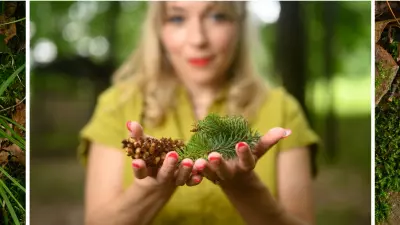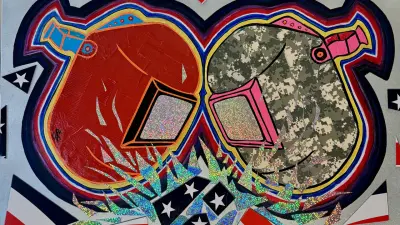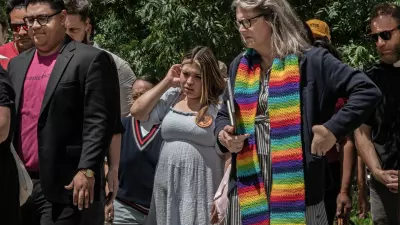The next time you walk into a vacant city lot, take note of the greenery muscling its way through cracked concrete or the stalks cropping up along the sides of buildings.

Some see weeds. Full-time forager Tim Clemens sees flavors.
Aside from the nutritious bitter greens of dandelions, pineapple weed — with its hints of green apple and chamomile — flourishes in those kinds of places. So does purslane, a plant sturdy enough to stick around North America since the last glacial period. These days, you can use it to add a lemony pop to salads or soup.
When I spoke to Clemens, one of a handful of increasingly influential foragers, the abandoned lot scene was what stuck with me most. Maybe that’s because Postindustrial Cities certainly have their share of these spaces, or because the idea was such a contrast to my initial mental image of foraging.
I’d pictured wandering through a lush wilderness, perhaps with a machete.
If I’ve learned anything so far about the revival of this skill, it’s that wild food journeys are full of surprises, rabbit holes, and opportunities to rethink your assumptions.
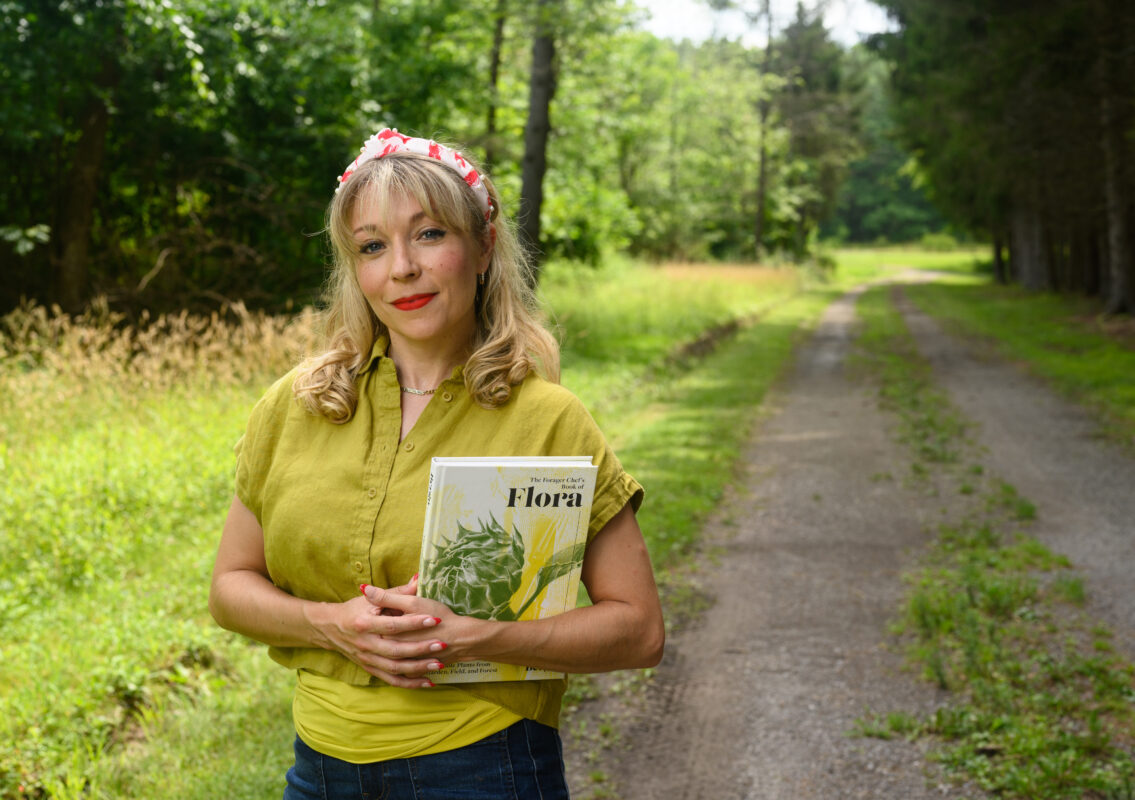
“I fell in love with what people call waste areas: the area between the sidewalk and the street or the weedy areas in parks,” Clemens told me. “I was seeing how beautiful they were and how this landscape of scarcity was actually one of abundance.”
Clemens grew up plucking raspberries in alleyways and sneaking into fruit trees around his Minneapolis neighborhood, but it wasn’t until he enrolled in an Ojibwe language and culture course in college that those urges returned. Then he joined his first foraging class, where he discovered the terminology to go along with what he calls the “most ancient human narrative,” — finding food on the landscape.
For generations, that narrative has been largely dismissed. That’s starting to change dramatically, according to Clemens and other emerging foragers.
A new generation and a final frontier
While wild ingredients have long been celebrated on menus at Michelin Star restaurants, for most Americans, foraging has been considered a quaint pastime, a pursuit for survivalists, or, at best, a distant memory of blackberry hunting.
Today, a group of wild plant proponents are urging a return to those distant memories and long-ignored foodways.
A quick search for “foraging” on Instagram or TikTok yields enough results to spend days exploring, or getting lost. Voices like Ironwood Foraging Co.’s Tim Clemens (@mnforager); indigenous ethnobotanist Linda Black Elk (@linda.black.elk); author and influential chef Alan Bergo (@foragerchef); and mycologist and TikTok Latinx Creatives grant winner Gabrielle Cerberville (@ chaoticforager) lend credibility to the conversation.
So does Alexis Nikole Nelson, a foraging teacher and cook based in Columbus, Ohio, whose TikTok (@ alexisnikole) and Instagram (@blackforager) accounts have more than 5 million followers. In a landmark moment, Nelson and Bergo both landed James Beard Awards in 2022.
That was when Bergo, a seasoned chef and show host with a remarkable comeback story from Lyme disease, knew things were taking a turn for the better.
“When I started to see Alexis Nelson’s meteoric rise, I thought this is the fuse that is going to bring this to a larger audience,’” he said. “There was this dichotomy for so long where wild food was seen as garbage food or survival food — but at the same time, it has always been served at some of the finest restaurants in the world.”
For the past decade, Bergo has used his growing online platforms to elevate untamed flavors and provide the missing link between foraging and food culture.
“When you look in most wild food books that show pictures of food, it’s atrocious. It’s comically bad because they aren’t food stylists,” he said. “This is a way I can spread the message of the beauty of wild foods and help break down this wall between poverty and luxury.”
His discoveries and recipes also build on the efforts of author and longtime forager Samuel Thayer, whose newest labor of love — a field guide to North American edible plants — was released in June.
“With Sam, I always felt like this movement was a powder keg ready to blow,” he said.
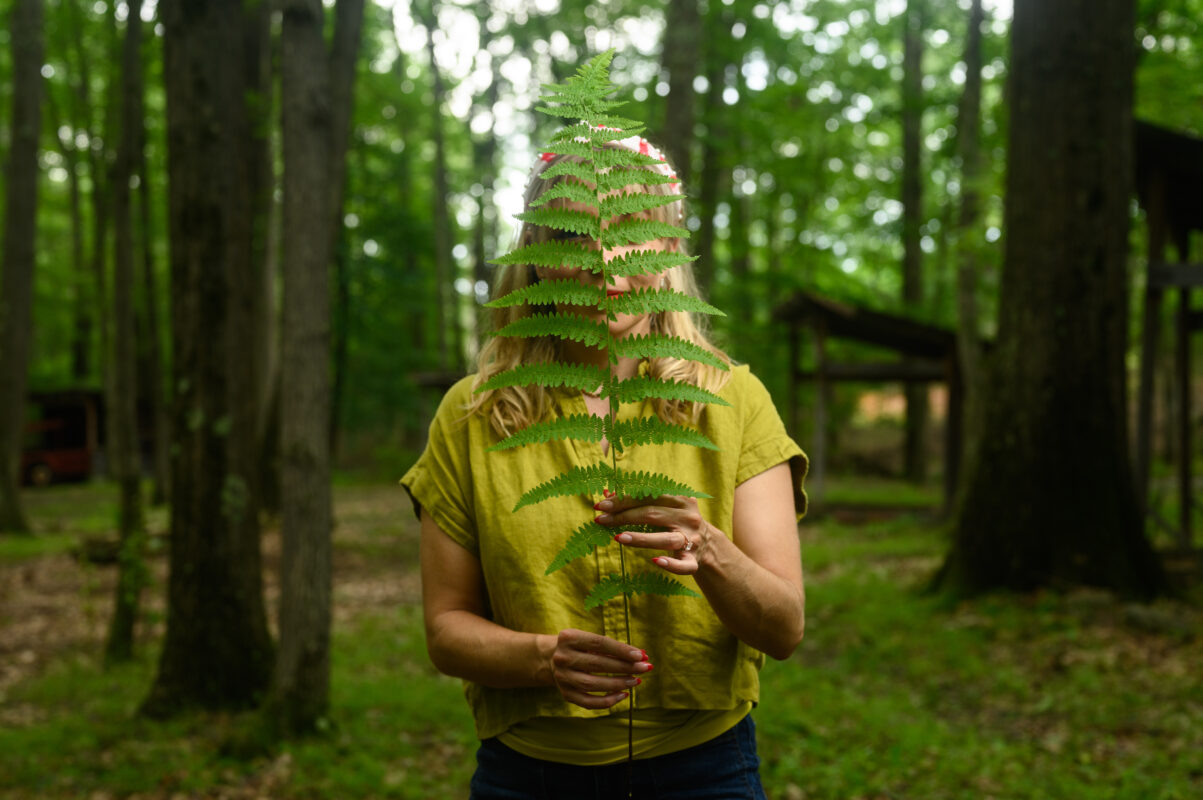
In Bergo’s mind, there’s much more on the horizon. He sees wild plants as the final frontier of the farm-to- table revolution.
And here’s why that momentum matters so much to the enthusiasts I spoke to: Getting people invested in natural habitats is a much more powerful way to incite activism than preaching hands-off conservation.
If you learn to create delicious — not just edible — meals with the fruits of your foraging, you start to see wild places in a much more specific and intimate light. You see your favorite mushroom spot as irreplaceable or an old hickory tree as much more than another feature on the landscape.
Go really deep, and you’ll also begin to notice more than four seasons.
“If I look out the window and see that the black locust tree is in bloom, that tells me that like 10 different greens are perfect right now,” Bergo said. “There are like 180 seasons, micro-seasons within seasons that are unique and different to every region of North America and around the world.”
Inspired by the excitement of those at the forefront, I decided to dive in.
I ordered Bergo’s new cookbook, “The Forager Chef’s Book of Flora,” a thoughtfully researched collection of recipes that blend his creativity and plant knowledge, and “Sam Thayer’s Field Guide to Edible Wild Plants of Eastern and Central North America.”
Thayer told me he spent at least eight of the past 13 years researching, eating, and photographing all 679 edible plants included in the field guide. Along the way, he also pioneered a new system for identifying a plant: by its shape and the way it grows, instead of its genetic group.
“I also realized as I was writing that I wanted really thorough descriptions,” Thayer said. “If you’re going to eat something, you need a higher level of confidence in how you identify it. Most descriptions are based off mature forms, but we don’t even have institutions — universities or government authorities — that really capture descriptions for plants when they are in nonflowering stages of growth. For so many edible plants, that’s when you eat them.”
That’s the role he wanted to fill, no matter how long it took or how much digging he had to do.
Foraging, he said, has been a miracle in his life — one he can’t imagine keeping to himself.
“If you talk to other people who forage, you’ll hear that again and again.”
A slow food approach
Ethnobotany and indigenous food sovereignty teacher Black Elk has dedicated the last two decades to sharing the power of plants at United Tribes Technical College in Bismarck, North Dakota. Gathering was a lifestyle she learned from the women in her family long before “foraging” became a popular search term. Her ancestry includes Korean, Mongolian, and Catawba, and she’s a member of the Standing Rock and Cheyenne River Lakota Nations.
One of her first assignments for students involves dandelions. Students have to record themselves eating five leaves, prepared however they like. Most students have little experience with bitter flavors.
The exercise is one way she works to confront centuries of attack on indigenous food wisdom, including vilified plants and tastes. To this day, she pointed out, the dandelion is depicted on the cover of Roundup, the best-known weed- and grass-killing product on commercial shelves.
“The real goal of the assignment is to change their relationship with dandelions, to stop thinking of them as something to get rid of and start thinking of them as food and medicine again,” she said. “In the future, when they see a dandelion, instead of being inclined to spray it or ignore it, which I think is worse, they will instead think here is this beneficial plant that’s always there for me.”
As excitement about foraging increases, Black Elk’s hope is that it awakens renewed interest in knowledge that already exists. The USDA’s Indigenous Food Sovereignty Initiative is one recent effort that compiles some of that wisdom, including guides for foraging and cooking, with help from Black Elk and others.
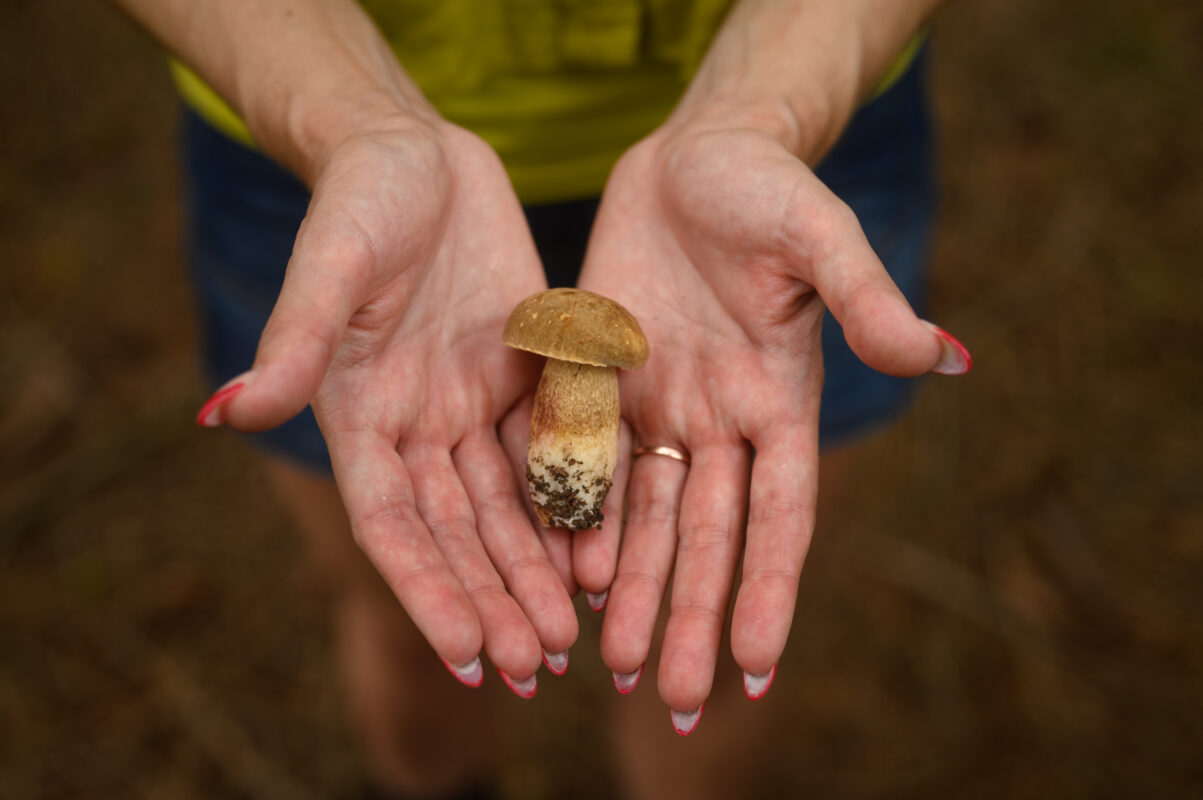
“People of color — indigenous people all over the world — when they gather food, they have a series of protocols in place that are very organized and passed down from one generation to the next,” she said. “It’s not just going out there and scrounging up something. There’s a methodology based in indigenous science and earth-based science. Most non-indigenous foragers, most white foragers, borrow from those protocols, and that’s great.”
To her, the key is creating a relationship with plants, which includes slowing down, getting to know each plant type you harvest, and having a plan for anything you bring home.
“It can’t be one-sided,” she said. “Most protocols involve some type of reciprocal gift. That varies all over the world and by individual plants. Maybe it’s a drink of water or some mulch. Maybe it’s weeding around the plant a little bit. There are all kinds of ways to practice reciprocity.”
Removing invasive species the right way (according to plant type) was a point that every forager I spoke with mentioned. Spend enough time connecting with plants as food, and it seems you’ll naturally become a steward of spaces that sustain you.
Cerberville, a self-proclaimed “mushroom auntie,” had a similar take on getting to know your harvest. An artist across mediums, one of Cerberville’s recommendations was to draw what you’ve found before you take it home to help you get to know the plant and better identify it.
To Cerberville, the renewed interest in foraging breaks down barriers. It makes sustainable living more accessible to people with limited financial resources because it requires only a willingness to learn.
“Being able to eat food produced near where you live or that grows near where you live naturally is not only better for you, but better for the environment,” Cerberville said. “If I go out and pick a bunch of wood nettle and I eat that for dinner, no trucks or airplanes need to be involved, and there are no fossil fuels spent unless I drive there.”
Eating my (wild) vegetables
Finally, after all my interviews and research, it was time to try foraging for myself. I reached out to Laurie Noll, a former culinary arts instructor I’d met at a farmer’s market in Western Pennsylvania. Noll had sold me some wild sorrel, shaking off a few small bugs and sharing her longtime interest in wild plants and edible landscaping.
When I visited her a few weeks later, she walked me through her bounty, starting with the herbs and black currants she’d arranged around tidy hardscaping near her front door. She led me to bushes of blueberries and red currants that double as decorative shrubbery. Then we reached a patch of daylilies, the tall flowers with bright orange blossoms that grow along roadsides around Pennsylvania.
She popped off two buds, bit into one and handed me the other.
It had a nice crunch and tasted watery to me, like most any raw green vegetable. Some people batter and fry them, the way others do with pumpkin blossoms, she said. She likes them plucked right from the stems, as a salad topping.
In her asparagus garden, we got to work pulling edible weeds. I was excited to find the purslane Clemens had told me about and taste a few lemony leaves. We also used my new field guide to identify another prolific garden visitor.
Turns out it was amaranth, which Thayer describes as widespread across the U.S., especially in human- made habitats like gardens, and delicious when cooked. I thought it would work well for one of Bergo’s recipes, “green cakes,” so I loaded up.
The garden looked better, the asparagus had some breathing room, and I was all set for a meal. By the time we’d returned to Noll’s home, though, my stomach was doing weird things.
I checked the field guide for daylilies and found a warning that it can cause digestive issues for some people. It was a good reminder to avoid rookie mistake No. 1: Never take a bite before you do your homework. (My stomach simmered down later that day, but I was thankful I hadn’t tried more than a single bud.)
Our plan to go deeper into the woods fell through and so did my plan to prepare my recipe before I left town that day. My vibrant amaranth was droopy several days later when we were back.
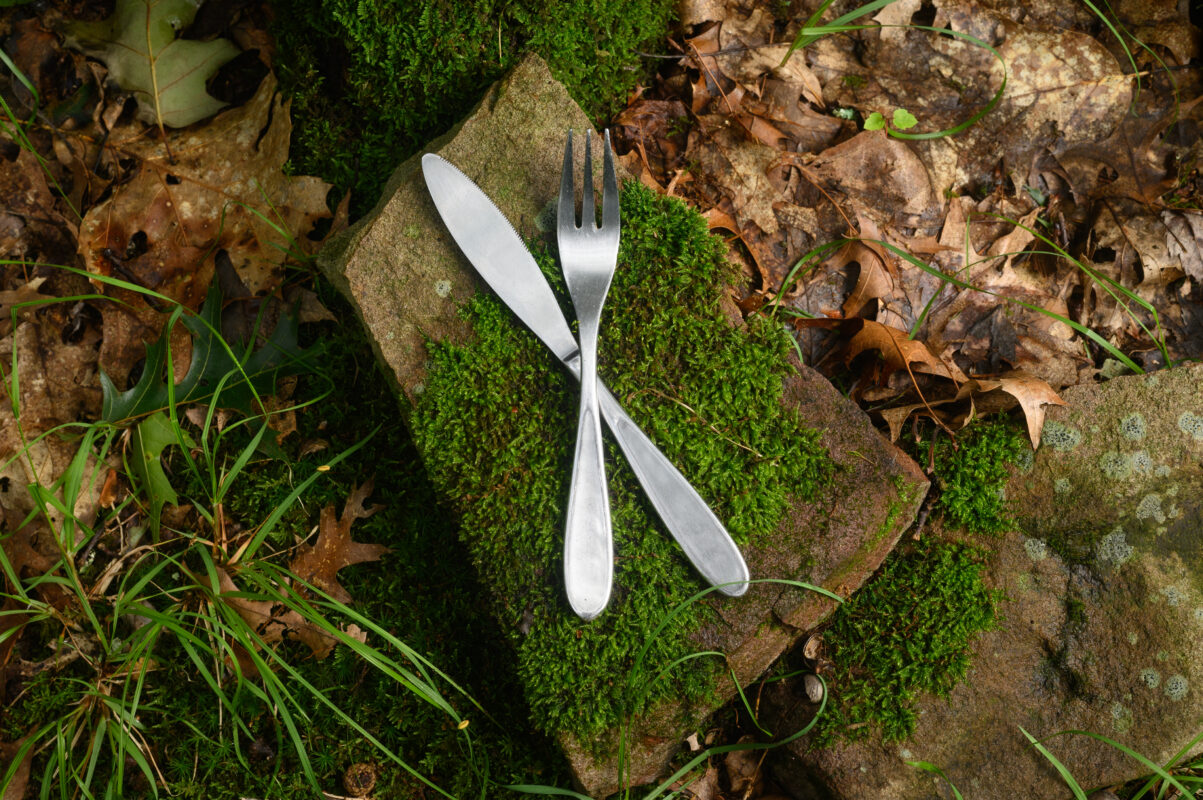
I’d have to do this on my own, in my own backyard.
Using Thayer’s guide — and cross-checking with a couple plant identifier apps — I discovered that the weeds I try (and most often fail) to control near my back fence are an edible wild green called goutweed, or ground elder. Trying to use all of my senses, I snapped a shoot and breathed in. It had a spikey aroma that made me think of celery. That also matched the guide, which says the leaves of this carrot cousin can be used raw or cooked as a vegetable.
I fussed over my findings for a few more days, re- reading the descriptions in detail and searching for any poisonous look-alikes. Finally, I decided to go for it. I picked a few fistfuls one Sunday morning and blanched them, the first step in Bergo’s “green cakes” recipe. In the pot, they quickly brightened up and took on the look of any green leafy vegetable.
My cakes were dense and crunchy, good with my avocado-bacon-tomato top layer but also tasty on their own with a sprinkle of sea salt. I think the goutweed came through as an herby taste, similar to parsley. It all made for a substantial Sunday breakfast.
I’ll definitely be experimenting with more, one cautious bite at a time. I keep reading about delicious uses for amaranth, my first harvest, so I’ll be reaching out to my new foraging friend for another trip to her garden.
I’m taking baby steps — because I don’t want to eat the wrong thing and I know I still have much to learn — but I’m already seeing my own backyard in a new light. I’m also looking differently at the food I buy.
Maybe the most important thing I learned was that you don’t have to go far to forage. You don’t need a machete or any special equipment; your most important tool will be your willingness to open your eyes to your surroundings.
Go as deep into the figurative or literal weeds as you want, or move at a slower pace. Either way, you’ll walk away with an expanded awareness of your corner of the world and maybe even a deeper understanding of your place in it.
That, as Thayer might say, is a miracle worth seeking out.

